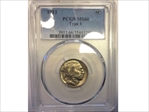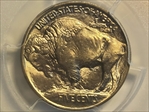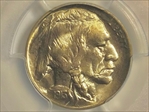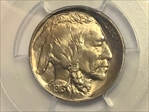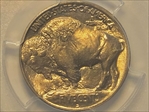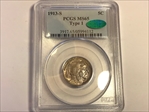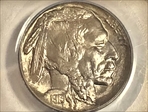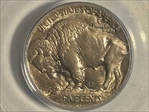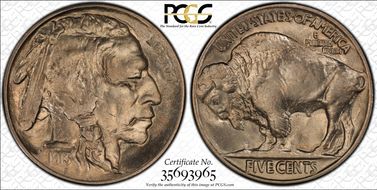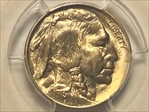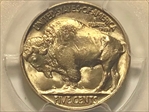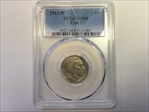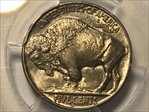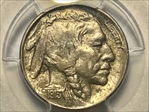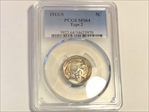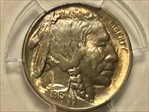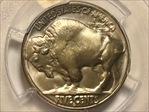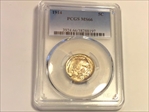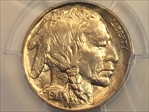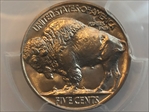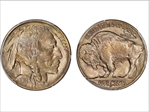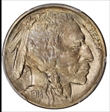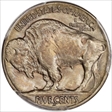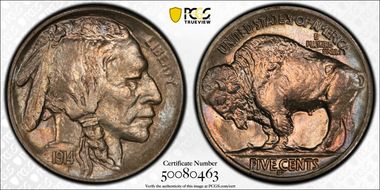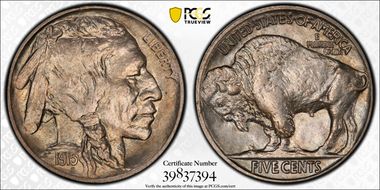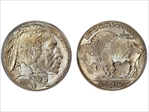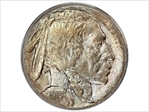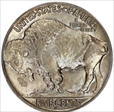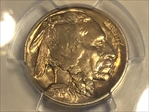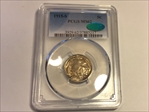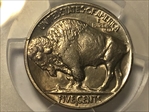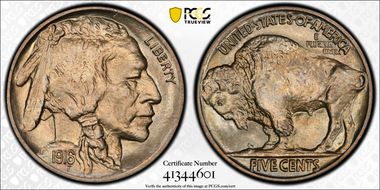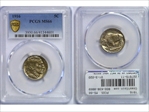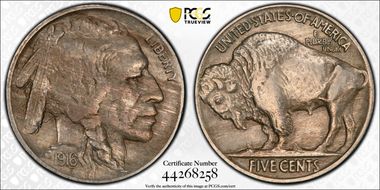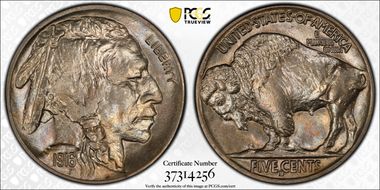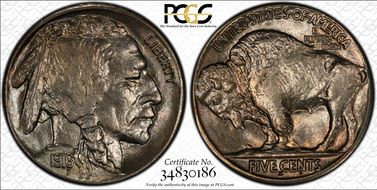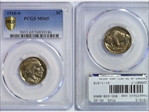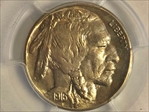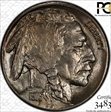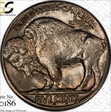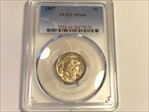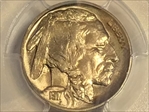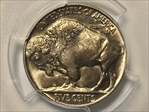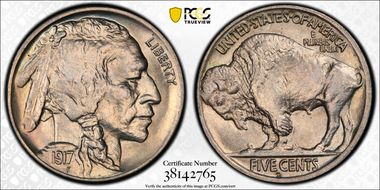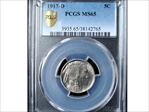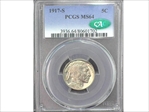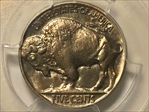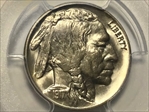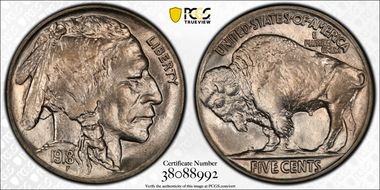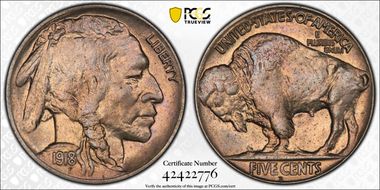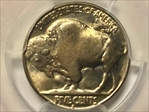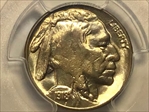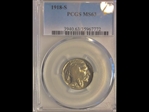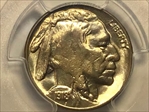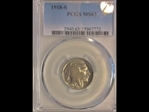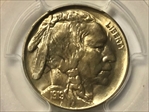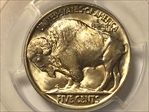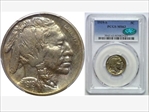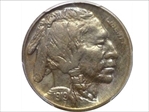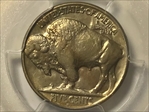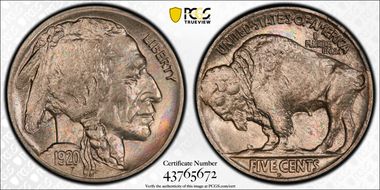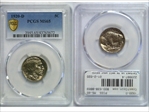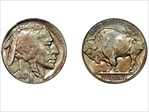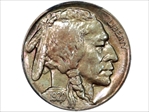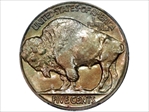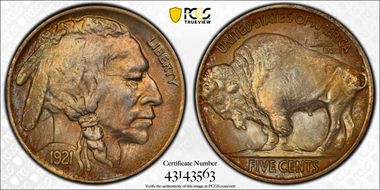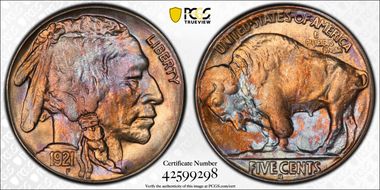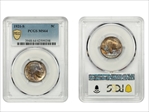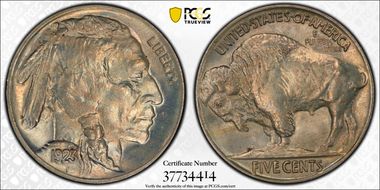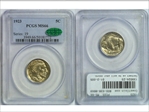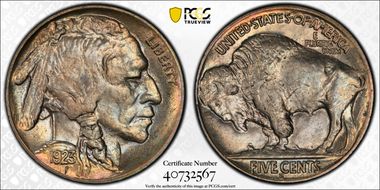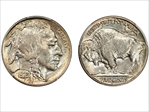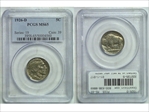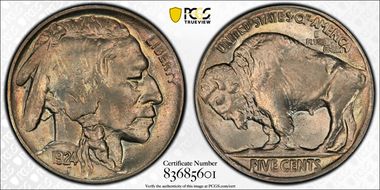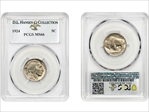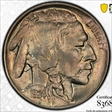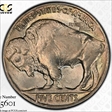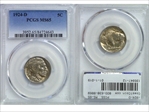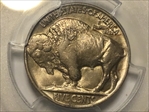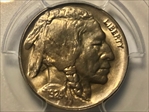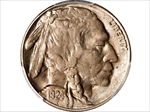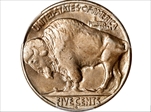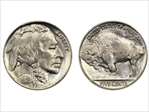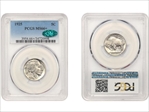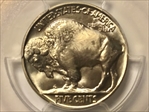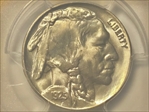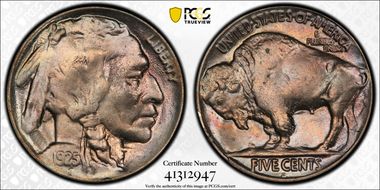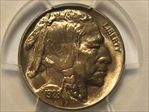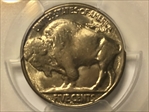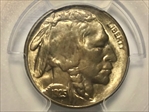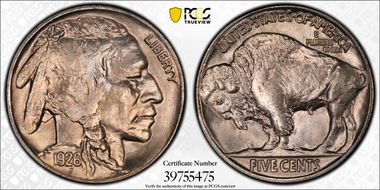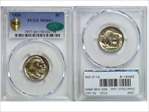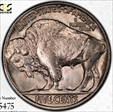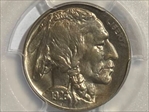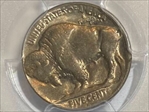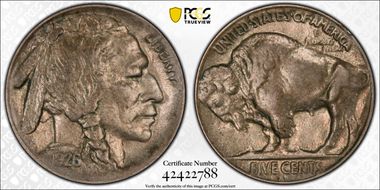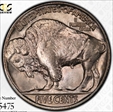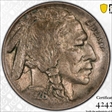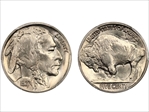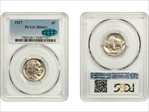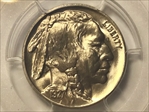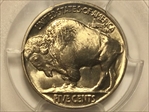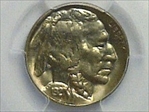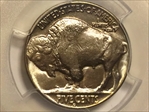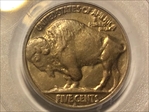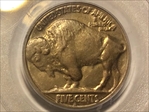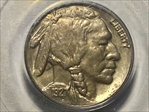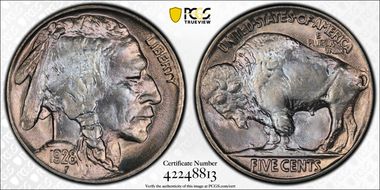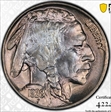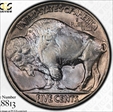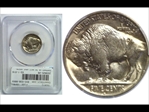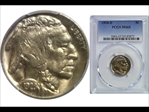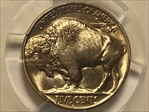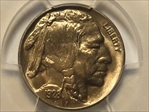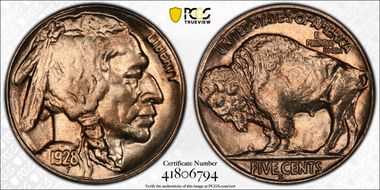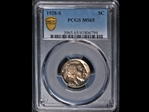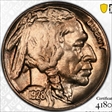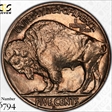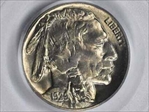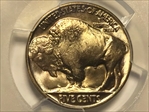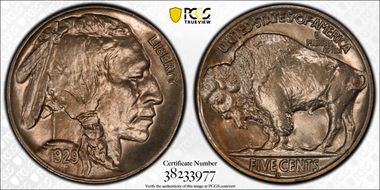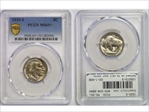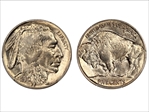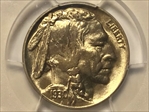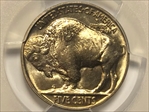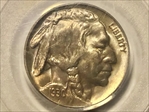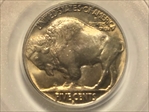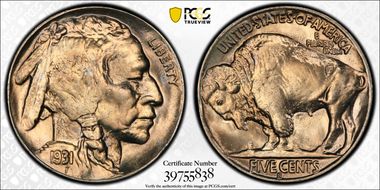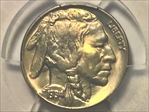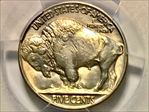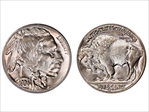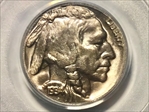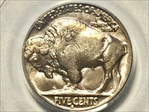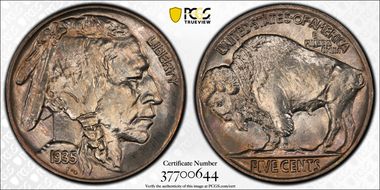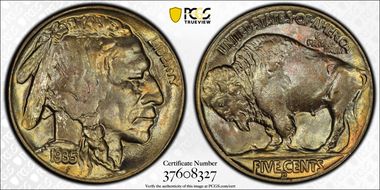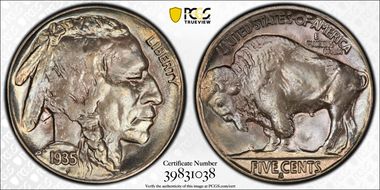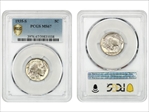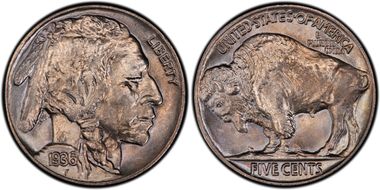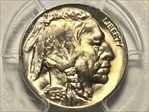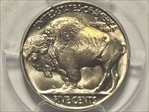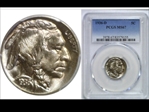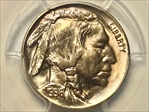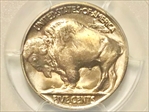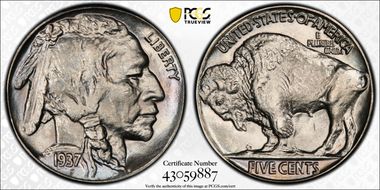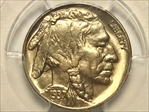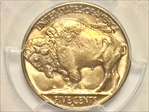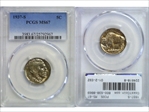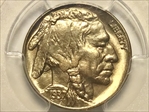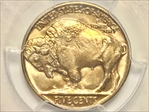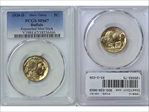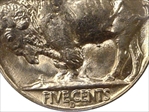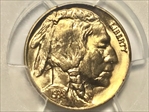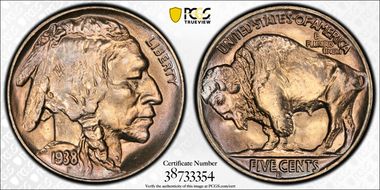Southern Mountain 的钱币相册
The 1913 Type 1 Buffalo nickel from the Philadelphia Mint is the most common of the Type 1 Buffalo nickels.
The 1913 Type 1 Buffalo nickel from the Philadelphia Mint is the most common of the Type 1 Buffalo nickels.
The 1913 Type 1 Buffalo nickel from the Philadelphia Mint is the most common of the Type 1 Buffalo nickels.
CAC The 1913-D Type 1 Buffalo nickel is relatively scarce and is sought after as a first-year, one-year only type coin. Examples are somewhat easy to locate through the Gem Uncirculated grades,
CAC The 1913-D Type 1 Buffalo nickel is relatively scarce and is sought after as a first-year, one-year only type coin. Examples are somewhat easy to locate through the Gem Uncirculated grades,
CAC The 1913-D Type 1 Buffalo nickel is relatively scarce and is sought after as a first-year, one-year only type coin. Examples are somewhat easy to locate through the Gem Uncirculated grades,
CAC. While 1913-S Type 1 Buffalo nickels may boast a decent seven-figure mintage, the issue has a relatively small number of survivors, with perhaps only 10,000 extant across all grades.
CAC. While 1913-S Type 1 Buffalo nickels may boast a decent seven-figure mintage, the issue has a relatively small number of survivors, with perhaps only 10,000 extant across all grades.
CAC. While 1913-S Type 1 Buffalo nickels may boast a decent seven-figure mintage, the issue has a relatively small number of survivors, with perhaps only 10,000 extant across all grades.
CAC. While 1913-S Type 1 Buffalo nickels may boast a decent seven-figure mintage, the issue has a relatively small number of survivors, with perhaps only 10,000 extant across all grades.
With a mintage of 29,857,186 pieces, about as many 1913 Type 2 nickels were struck at the Philly Mint as there were Type 1, though the Type 2 is perhaps a bit scarcer in grades of MS66 and higher.
With a mintage of 29,857,186 pieces, about as many 1913 Type 2 nickels were struck at the Philly Mint as there were Type 1, though the Type 2 is perhaps a bit scarcer in grades of MS66 and higher.
With a mintage of 29,857,186 pieces, about as many 1913 Type 2 nickels were struck at the Philly Mint as there were Type 1, though the Type 2 is perhaps a bit scarcer in grades of MS66 and higher.
The 1913-D Type 2 Buffalo nickel is a scarce key-date coin, with far fewer available examples than the issue’s mintage figure may suggest, with perhaps only 10,000 existing across all grades, and fewer than 20% of those in uncirculated grades.
The 1913-D Type 2 Buffalo nickel is a scarce key-date coin, with far fewer available examples than the issue’s mintage figure may suggest, with perhaps only 10,000 existing across all grades, and fewer than 20% of those in uncirculated grades.
The 1913-D Type 2 Buffalo nickel is a scarce key-date coin, with far fewer available examples than the issue’s mintage figure may suggest, with perhaps only 10,000 existing across all grades, and fewer than 20% of those in uncirculated grades.
The 1913-S Type 2 Buffalo nickel is a scarce key-date coin with the third-lowest business-strike mintage of the series. Only 1,209,000 examples were made and only 14,000 specimens are estimated to survive, with about 1,800 known in uncirculated grades.
The 1913-S Type 2 Buffalo nickel is a scarce key-date coin with the third-lowest business-strike mintage of the series. Only 1,209,000 examples were made and only 14,000 specimens are estimated to survive, with about 1,800 known in uncirculated grades.
The 1913-S Type 2 Buffalo nickel is a scarce key-date coin with the third-lowest business-strike mintage of the series. Only 1,209,000 examples were made and only 14,000 specimens are estimated to survive, with about 1,800 known in uncirculated grades.
Lustrous. Nearly a Full-Details coin. Across the board, all 1914 Buffalo nickels are considerably scarce, including this Philadelphia-minted issue. There are about 12,000 known survivors for all grades, which is a remarkably small percentage of the issue’s overall mintage. In the grades of MS65, the 1914 Buffalo nickel becomes fairly challenging.
Lustrous. Nearly a Full-Details coin. Across the board, all 1914 Buffalo nickels are considerably scarce, including this Philadelphia-minted issue. There are about 12,000 known survivors for all grades, which is a remarkably small percentage of the issue’s overall mintage. In the grades of MS65, the 1914 Buffalo nickel becomes fairly challenging.
Lustrous. Nearly a Full-Details coin. Across the board, all 1914 Buffalo nickels are considerably scarce, including this Philadelphia-minted issue. There are about 12,000 known survivors for all grades, which is a remarkably small percentage of the issue’s overall mintage. In the grades of MS65, the 1914 Buffalo nickel becomes fairly challenging.
CAC SEMI-KEY DATE The 1914-D Buffalo nickel is among the scarcest mint marked issues in the series, with only 3,912,000 struck and just about 8,000 known examples across the grading spectrum. This semi-key coin is sought after in all grades, with even circulated examples proving scarce.
CAC SEMI-KEY DATE The 1914-D Buffalo nickel is among the scarcest mint marked issues in the series, with only 3,912,000 struck and just about 8,000 known examples across the grading spectrum. This semi-key coin is sought after in all grades, with even circulated examples proving scarce.
CAC SEMI-KEY DATE The 1914-D Buffalo nickel is among the scarcest mint marked issues in the series, with only 3,912,000 struck and just about 8,000 known examples across the grading spectrum. This semi-key coin is sought after in all grades, with even circulated examples proving scarce.
Not particularly scarce, though tougher to locate than its Philly counterparts from the 1920s and certainly the 1930s, the 1915 Buffalo nickel is available in adequate supplies.
CAC. Difficult to find in circulated condition, the coin is tougher yet to locate in uncirculated grades and is extremely scarce in MS66 and MS67
CAC. Difficult to find in circulated condition, the coin is tougher yet to locate in uncirculated grades and is extremely scarce in MS66 and MS67
CAC. Difficult to find in circulated condition, the coin is tougher yet to locate in uncirculated grades and is extremely scarce in MS66 and MS67
CAC SEMI-KEY DATE The 1915-S Buffalo nickel is extremely scarce in all grades and is particularly challenging in Gem Uncirculated grades. Only 1,505,000 were struck and, of these, an estimated 6,000 pieces survive.
CAC SEMI-KEY DATE The 1915-S Buffalo nickel is extremely scarce in all grades and is particularly challenging in Gem Uncirculated grades. Only 1,505,000 were struck and, of these, an estimated 6,000 pieces survive.
CAC SEMI-KEY DATE The 1915-S Buffalo nickel is extremely scarce in all grades and is particularly challenging in Gem Uncirculated grades. Only 1,505,000 were struck and, of these, an estimated 6,000 pieces survive.
With a mintage of nearly 63.5 million, the 1916 Buffalo nickels from the Philadelphia Mint boast the highest mintage for the series of any issue from the 1910s. These pieces are plentiful in all circulated grades and even in uncirculated. However, the coin is scarce in MS66 and decidedly difficult in MS67
With a mintage of nearly 63.5 million, the 1916 Buffalo nickels from the Philadelphia Mint boast the highest mintage for the series of any issue from the 1910s. These pieces are plentiful in all circulated grades and even in uncirculated. However, the coin is scarce in MS66 and decidedly difficult in MS67
CAC KEY DOUBLE DATE The 1916 doubled die is an extremely rare and popular error variety. One reason this coin is so well pursued by collectors is that the doubling is clearly visible with the naked eye. Survival estimates for this issue range from 200 to 500 pieces. It is 1 of 2 Buffalo Nickels that has a weighted value of 10 in the PCGS Registry Set Composition list. Only 42 have been graded higher than MS 50 by PCGS and only 8 are uncirculated. Only 3 MS 50s have CAC designations
CAC KEY DOUBLE DATE The 1916 doubled die is an extremely rare and popular error variety. One reason this coin is so well pursued by collectors is that the doubling is clearly visible with the naked eye. Survival estimates for this issue range from 200 to 500 pieces. It is 1 of 2 Buffalo Nickels that has a weighted value of 10 in the PCGS Registry Set Composition list. Only 42 have been graded higher than MS 50 by PCGS and only 8 are uncirculated. Only 3 MS 50s have CAC designations
CAC KEY DOUBLE DATE The 1916 doubled die is an extremely rare and popular error variety. One reason this coin is so well pursued by collectors is that the doubling is clearly visible with the naked eye. Survival estimates for this issue range from 200 to 500 pieces. It is 1 of 2 Buffalo Nickels that has a weighted value of 10 in the PCGS Registry Set Composition list. Only 42 have been graded higher than MS 50 by PCGS and only 8 are uncirculated. Only 3 MS 50s have CAC designations
CAC KEY DOUBLE DATE The 1916 doubled die is an extremely rare and popular error variety. One reason this coin is so well pursued by collectors is that the doubling is clearly visible with the naked eye. Survival estimates for this issue range from 200 to 500 pieces. It is 1 of 2 Buffalo Nickels that has a weighted value of 10 in the PCGS Registry Set Composition list. Only 42 have been graded higher than MS 50 by PCGS and only 8 are uncirculated. Only 3 MS 50s have CAC designations
CAC KEY DOUBLE DATE The 1916 doubled die is an extremely rare and popular error variety. One reason this coin is so well pursued by collectors is that the doubling is clearly visible with the naked eye. Survival estimates for this issue range from 200 to 500 pieces. It is 1 of 2 Buffalo Nickels that has a weighted value of 10 in the PCGS Registry Set Composition list. Only 42 have been graded higher than MS 50 by PCGS and only 8 are uncirculated. Only 3 MS 50s have CAC designations
Boasting a mintage of 13,333,000, this coin is scarce in circulated grades and tough in uncirculated levels, though as a rule is generally well struck.
While a scarce coin in an absolute sense, the 1916-S Buffalo nickel is actually the least challenging of the S-mint teen dates in the series and is easier to locate than its higher-mintage Denver-mint counterpart from 1916.
While a scarce coin in an absolute sense, the 1916-S Buffalo nickel is actually the least challenging of the S-mint teen dates in the series and is easier to locate than its higher-mintage Denver-mint counterpart from 1916.
While a scarce coin in an absolute sense, the 1916-S Buffalo nickel is actually the least challenging of the S-mint teen dates in the series and is easier to locate than its higher-mintage Denver-mint counterpart from 1916.
While a scarce coin in an absolute sense, the 1916-S Buffalo nickel is actually the least challenging of the S-mint teen dates in the series and is easier to locate than its higher-mintage Denver-mint counterpart from 1916.
While a scarce coin in an absolute sense, the 1916-S Buffalo nickel is actually the least challenging of the S-mint teen dates in the series and is easier to locate than its higher-mintage Denver-mint counterpart from 1916.
The 1917 Buffalo nickel is a fairly typical Philadelphia issue from its era, and most of these are pretty well struck. A total of 51,424,019 were struck and there are about 10,000 or so known survivors, with plenty available in circulated grades.
The 1917 Buffalo nickel is a fairly typical Philadelphia issue from its era, and most of these are pretty well struck. A total of 51,424,019 were struck and there are about 10,000 or so known survivors, with plenty available in circulated grades.
The 1917 Buffalo nickel is a fairly typical Philadelphia issue from its era, and most of these are pretty well struck. A total of 51,424,019 were struck and there are about 10,000 or so known survivors, with plenty available in circulated grades.
The 1917-D Buffalo nickel is among the most challenging early mint marked buffalo series, proving scarce even in circulated grades and difficult in uncirculated grades of Gem or better.
The 1917-D Buffalo nickel is among the most challenging early mint marked buffalo series, proving scarce even in circulated grades and difficult in uncirculated grades of Gem or better.
CAC. The 1917-S Buffalo nickel is one of the toughest to find of the early S-mint Buffalo nickels and is quite difficult to locate in the Gem grades. Fewer than 5000 are known in any grade.
CAC. The 1917-S Buffalo nickel is one of the toughest to find of the early S-mint Buffalo nickels and is quite difficult to locate in the Gem grades. Fewer than 5000 are known in any grade.
CAC. The 1917-S Buffalo nickel is one of the toughest to find of the early S-mint Buffalo nickels and is quite difficult to locate in the Gem grades. Fewer than 5000 are known in any grade.
The 1918 Buffalo is scarce in Gem and rare in MS67 — the highest grade awarded to the coin by PCGS or NGC. In Gem condition, the 1918 is the rarest P Mint Buffalo nickel.
CAC KEY OVERDATE This is considered one of the most important rarities by various numismatic experts. The 1918/7-D nickel is one of the rarest Buffaloes. It’s rare in all grades, even the lowest circulated grades. It is 1 of 2 Buffalo Nickels that has a weighted value of 10 in the PCGS Registry Set Composition list.
CAC KEY OVERDATE This is considered one of the most important rarities by various numismatic experts. The 1918/7-D nickel is one of the rarest Buffaloes. It’s rare in all grades, even the lowest circulated grades. It is 1 of 2 Buffalo Nickels that has a weighted value of 10 in the PCGS Registry Set Composition list.
CAC KEY OVERDATE This is considered one of the most important rarities by various numismatic experts. The 1918/7-D nickel is one of the rarest Buffaloes. It’s rare in all grades, even the lowest circulated grades. It is 1 of 2 Buffalo Nickels that has a weighted value of 10 in the PCGS Registry Set Composition list.
CAC KEY OVERDATE This is considered one of the most important rarities by various numismatic experts. The 1918/7-D nickel is one of the rarest Buffaloes. It’s rare in all grades, even the lowest circulated grades. It is 1 of 2 Buffalo Nickels that has a weighted value of 10 in the PCGS Registry Set Composition list.
CAC KEY OVERDATE This is considered one of the most important rarities by various numismatic experts. The 1918/7-D nickel is one of the rarest Buffaloes. It’s rare in all grades, even the lowest circulated grades. It is 1 of 2 Buffalo Nickels that has a weighted value of 10 in the PCGS Registry Set Composition list.
The 1918-D Buffalo nickel is a scarce Denver-mint issue, . With a mintage of 8,362,000, the 1918-D is decidedly difficult to find in any grade.
The 1918-D Buffalo nickel is a scarce Denver-mint issue, . With a mintage of 8,362,000, the 1918-D is decidedly difficult to find in any grade.
This coin is rare in uncirculated grades and particularly so in Gem grades. It is one of the rarest of the early Buffalo issues. There are approximately 4500 known survivors.
This coin is rare in uncirculated grades and particularly so in Gem grades. It is one of the rarest of the early Buffalo issues. There are approximately 4500 known survivors.
This coin is rare in uncirculated grades and particularly so in Gem grades. It is one of the rarest of the early Buffalo issues. There are approximately 4500 known survivors.
This coin is rare in uncirculated grades and particularly so in Gem grades. It is one of the rarest of the early Buffalo issues. There are approximately 4500 known survivors.
This coin is rare in uncirculated grades and particularly so in Gem grades. It is one of the rarest of the early Buffalo issues. There are approximately 4500 known survivors.
The 1919 Buffalo nickel is a relatively common Philadelphia-minted issue and circulated issues are available in adequate supplies; Gems are also reasonably common, at least by the standards of early Buffalo nickels.
The 1919 Buffalo nickel is a relatively common Philadelphia-minted issue and circulated issues are available in adequate supplies; Gems are also reasonably common, at least by the standards of early Buffalo nickels.
The 1919 Buffalo nickel is a relatively common Philadelphia-minted issue and circulated issues are available in adequate supplies; Gems are also reasonably common, at least by the standards of early Buffalo nickels.
The 1919-D is the rarest Denver-mint issue in Gem of all pre-1920 Buffaloes. It is rare in all uncirculated levels., especially in gem condition. There are fewer than 6,000 survivors across the board,
The 1919-D is the rarest Denver-mint issue in Gem of all pre-1920 Buffaloes. It is rare in all uncirculated levels., especially in gem condition. There are fewer than 6,000 survivors across the board,
CAC The 1919-S is a highly scarce issue, with uncirculated examples proving rare and Gems nearly elusive. Relatively few of these coins were saved by collectors in any grade and an estimated number of fewer than 1,000 were kept in uncirculated condition.
CAC The 1919-S is a highly scarce issue, with uncirculated examples proving rare and Gems nearly elusive. Relatively few of these coins were saved by collectors in any grade and an estimated number of fewer than 1,000 were kept in uncirculated condition.
CAC The 1919-S is a highly scarce issue, with uncirculated examples proving rare and Gems nearly elusive. Relatively few of these coins were saved by collectors in any grade and an estimated number of fewer than 1,000 were kept in uncirculated condition.
CAC The 1920 P usually have weak strikes in some areas. Gem uncirculated examples are scarce, though not necessarily rare.
CAC The 1920 P usually have weak strikes in some areas. Gem uncirculated examples are scarce, though not necessarily rare.
Scarce in all grades, with even circulated examples above Fine to Very Fine proving difficult to locate. In uncirculated and especially Gem levels. The 1920-D Buffalo nickel is rarer than most other Denver-mint Buffalos
Scarce in all grades, with even circulated examples above Fine to Very Fine proving difficult to locate. In uncirculated and especially Gem levels. The 1920-D Buffalo nickel is rarer than most other Denver-mint Buffalos
CAC The 1920-S Buffalo nickel is a scarce issue, in the series. It is a truly difficult coin to find in uncirculated grades and exceptionally rare in Gem levels, perhaps one of the rarest, if not the rarest in that grade range besides the elusive the 1926-S Buffalo nickel.
CAC The 1920-S Buffalo nickel is a scarce issue, in the series. It is a truly difficult coin to find in uncirculated grades and exceptionally rare in Gem levels, perhaps one of the rarest, if not the rarest in that grade range besides the elusive the 1926-S Buffalo nickel.
CAC The 1920-S Buffalo nickel is a scarce issue, in the series. It is a truly difficult coin to find in uncirculated grades and exceptionally rare in Gem levels, perhaps one of the rarest, if not the rarest in that grade range besides the elusive the 1926-S Buffalo nickel.
Like so many other early Buffalo nickels few were saved by collectors. This coin is very scarce in Gem uncirculated condition. However, there are a reasonable number of examples grading as high as MS67.
Like so many other early Buffalo nickels few were saved by collectors. This coin is very scarce in Gem uncirculated condition. However, there are a reasonable number of examples grading as high as MS67.
SEMI-KEY DATE. The 1921-S is scarce in uncirculated grades and is very rare. In Gem condition, This stems in large part from the coin’s very small mintage of only 1,557,000 pieces, of which perhaps fewer than 10,000 were saved.
SEMI-KEY DATE. The 1921-S is scarce in uncirculated grades and is very rare. In Gem condition, This stems in large part from the coin’s very small mintage of only 1,557,000 pieces, of which perhaps fewer than 10,000 were saved.
CAC. In the general sense it is fairly common in circulated grades, but in uncirculated grades and particularly Gem grades it is quite scarce.
CAC. In the general sense it is fairly common in circulated grades, but in uncirculated grades and particularly Gem grades it is quite scarce.
BETTER DATE - Circulated pieces are tough to find and are quite rare in Gem grades. Strike can be a major problem.for this issue and is in part why so few achieve a grade of MS65 or better
BETTER DATE - Circulated pieces are tough to find and are quite rare in Gem grades. Strike can be a major problem.for this issue and is in part why so few achieve a grade of MS65 or better
BETTER DATE - Circulated pieces are tough to find and are quite rare in Gem grades. Strike can be a major problem.for this issue and is in part why so few achieve a grade of MS65 or better
The 1924 Buffalo nickel is considerably scarce in uncirculated grades and rare in Gem. Experts estimate that fewer than 8,000 survive, making this one of the most challenging Philadelphia Buffalo nickels and the rarest in the Gem grade after 1918.
The 1924 Buffalo nickel is considerably scarce in uncirculated grades and rare in Gem. Experts estimate that fewer than 8,000 survive, making this one of the most challenging Philadelphia Buffalo nickels and the rarest in the Gem grade after 1918.
The 1924 Buffalo nickel is considerably scarce in uncirculated grades and rare in Gem. Experts estimate that fewer than 8,000 survive, making this one of the most challenging Philadelphia Buffalo nickels and the rarest in the Gem grade after 1918.
The 1924 Buffalo nickel is considerably scarce in uncirculated grades and rare in Gem. Experts estimate that fewer than 8,000 survive, making this one of the most challenging Philadelphia Buffalo nickels and the rarest in the Gem grade after 1918.
The 1924-D Buffalo nickel is a scarce issue, Circulated pieces prove tough especially in the XF range or higher, while uncirculated specimens are downright challenging. The mintage of the 1924-D is 5,258,000 pieces with an estimated survival rate of fewer than 200 in MS65 or better
The 1924-D Buffalo nickel is a scarce issue, Circulated pieces prove tough especially in the XF range or higher, while uncirculated specimens are downright challenging. The mintage of the 1924-D is 5,258,000 pieces with an estimated survival rate of fewer than 200 in MS65 or better
The 1924-D Buffalo nickel is a scarce issue, Circulated pieces prove tough especially in the XF range or higher, while uncirculated specimens are downright challenging. The mintage of the 1924-D is 5,258,000 pieces with an estimated survival rate of fewer than 200 in MS65 or better
CAC A decent number of uncirculated pieces are available through the mid-range Gem levels, but the piece proves tough in MS66 or higher.
CAC A decent number of uncirculated pieces are available through the mid-range Gem levels, but the piece proves tough in MS66 or higher.
CAC A decent number of uncirculated pieces are available through the mid-range Gem levels, but the piece proves tough in MS66 or higher.
CAC A decent number of uncirculated pieces are available through the mid-range Gem levels, but the piece proves tough in MS66 or higher.
With its relatively small mintage, the 1925-D Buffalo nickel is scarce across all grades, especially in grades of XF or higher, and in Gem it is a considerably rare coin. PCGS and NGC have collectively graded only a handful of specimens in MS66, and NGC has certified only 1 in MS67 as of summer 2019.
With its relatively small mintage, the 1925-D Buffalo nickel is scarce across all grades, especially in grades of XF or higher, and in Gem it is a considerably rare coin. PCGS and NGC have collectively graded only a handful of specimens in MS66, and NGC has certified only 1 in MS67 as of summer 2019.
KET DATE. The 1925-S is a relatively tough coin to find in circulated grades and is quite scarce in uncirculated and especially Gem grades.
KET DATE. The 1925-S is a relatively tough coin to find in circulated grades and is quite scarce in uncirculated and especially Gem grades.
KET DATE. The 1925-S is a relatively tough coin to find in circulated grades and is quite scarce in uncirculated and especially Gem grades.
CAC. The 1926 Philadelphia is a common coin. By the mid 1920s, more people were saving Buffalo nickels thanks to the advent of coin albums designed for contemporary US coinage. This meant that more Buffalo nickels exist for many of the issues from the late 1920s and the 1930s.
CAC. The 1926 Philadelphia is a common coin. By the mid 1920s, more people were saving Buffalo nickels thanks to the advent of coin albums designed for contemporary US coinage. This meant that more Buffalo nickels exist for many of the issues from the late 1920s and the 1930s.
CAC. The 1926 Philadelphia is a common coin. By the mid 1920s, more people were saving Buffalo nickels thanks to the advent of coin albums designed for contemporary US coinage. This meant that more Buffalo nickels exist for many of the issues from the late 1920s and the 1930s.
SEMI-KEY DATE The 1926-D is a scarce in all grades and certainly so in uncirculated condition, in which fewer than 300 are estimated to have survived.
SEMI-KEY DATE The 1926-D is a scarce in all grades and certainly so in uncirculated condition, in which fewer than 300 are estimated to have survived.
SEMI-KEY DATE The 1926-D is a scarce in all grades and certainly so in uncirculated condition, in which fewer than 300 are estimated to have survived.
CAC. It’s one of the most common dates of the 1920s. Hundreds of examples are known in MS66 and dozens in MS67.
CAC. It’s one of the most common dates of the 1920s. Hundreds of examples are known in MS66 and dozens in MS67.
CAC. It’s one of the most common dates of the 1920s. Hundreds of examples are known in MS66 and dozens in MS67.
CAC. It’s one of the most common dates of the 1920s. Hundreds of examples are known in MS66 and dozens in MS67.
The 27-D is a scarce coin in the higher circulated and all uncirculated grades. Fewer than 1,500 to 2,000 are thought to exist in uncirculated condition, and perhaps 150 remain in MS65 or better.
The 27-D is a scarce coin in the higher circulated and all uncirculated grades. Fewer than 1,500 to 2,000 are thought to exist in uncirculated condition, and perhaps 150 remain in MS65 or better.
CAC. SEMI-KEY DATE The 1927-S Buffalo nickel is a challenging semi-key issue that becomes increasingly tough the higher one goes up the grading spectrum
CAC. SEMI-KEY DATE The 1927-S Buffalo nickel is a challenging semi-key issue that becomes increasingly tough the higher one goes up the grading spectrum
CAC. SEMI-KEY DATE The 1927-S Buffalo nickel is a challenging semi-key issue that becomes increasingly tough the higher one goes up the grading spectrum
CAC. SEMI-KEY DATE The 1927-S Buffalo nickel is a challenging semi-key issue that becomes increasingly tough the higher one goes up the grading spectrum
Though not a common coin in Gem, it is one of the easier dates to find in that grade.
Though not a common coin in Gem, it is one of the easier dates to find in that grade.
Though not a common coin in Gem, it is one of the easier dates to find in that grade.
The 28-D is somewhat scarce in all grades. The coin is tough to find in Gem grades and is rare in MS 66 or higher.
The 28-D is somewhat scarce in all grades. The coin is tough to find in Gem grades and is rare in MS 66 or higher.
The 28-D is somewhat scarce in all grades. The coin is tough to find in Gem grades and is rare in MS 66 or higher.
The 28-D is somewhat scarce in all grades. The coin is tough to find in Gem grades and is rare in MS 66 or higher.
The 1928-S Buffalo nickel is a scarce coin. Tough to find in circulated condition, rare in uncirculated, and very rare in Gem grades, the 1928-S is a better coin by every measure. Very few of these coins are known in MS65 or above.
The 1928-S Buffalo nickel is a scarce coin. Tough to find in circulated condition, rare in uncirculated, and very rare in Gem grades, the 1928-S is a better coin by every measure. Very few of these coins are known in MS65 or above.
The 1928-S Buffalo nickel is a scarce coin. Tough to find in circulated condition, rare in uncirculated, and very rare in Gem grades, the 1928-S is a better coin by every measure. Very few of these coins are known in MS65 or above.
The 1928-S Buffalo nickel is a scarce coin. Tough to find in circulated condition, rare in uncirculated, and very rare in Gem grades, the 1928-S is a better coin by every measure. Very few of these coins are known in MS65 or above.
The 1929 P nickel is common in circulated grades, scarcer in uncirculated levels and tough in Gem grades.
The 1929 P nickel is common in circulated grades, scarcer in uncirculated levels and tough in Gem grades.
The 1929 P nickel is common in circulated grades, scarcer in uncirculated levels and tough in Gem grades.
CAC. There isn’t a huge supply of 1929 Ds in MS65 or better. While one of the toughest Denver-minted issues in the series at any point after 1928, it’s not nearly as rare as most of the earlier mintmarked issues.
Many of the 1929 S coins languished in bank vaults during the Great Depression due to less spending by an economically starving public. With 1,000 specimens estimated to survive in MS65 or better, this S-mint nickel is scarce but not impossibly difficult in Gem grades.
Many of the 1929 S coins languished in bank vaults during the Great Depression due to less spending by an economically starving public. With 1,000 specimens estimated to survive in MS65 or better, this S-mint nickel is scarce but not impossibly difficult in Gem grades.
While not as readily available in the better grades as other Philadelphia mint issues after 1934, this piece is far and away more common than virtually any of the other Buffalo nickels that preceded it in the series.
While not as readily available in the better grades as other Philadelphia mint issues after 1934, this piece is far and away more common than virtually any of the other Buffalo nickels that preceded it in the series.
While not as readily available in the better grades as other Philadelphia mint issues after 1934, this piece is far and away more common than virtually any of the other Buffalo nickels that preceded it in the series.
The 1930-S Is tougher to find than later S-Mint Buffaloes. Experts believe about 1000 exist in MS65 or better. Presently less than a dozen combined specimens in MS67 or better have been graded by PCGS and NGC.
The 1930-S Is tougher to find than later S-Mint Buffaloes. Experts believe about 1000 exist in MS65 or better. Presently less than a dozen combined specimens in MS67 or better have been graded by PCGS and NGC.
The 1930-S Is tougher to find than later S-Mint Buffaloes. Experts believe about 1000 exist in MS65 or better. Presently less than a dozen combined specimens in MS67 or better have been graded by PCGS and NGC.
The 1931-S Buffalo nickel has the second-lowest mintage of the series, at just 1,200,000. While not the most common of the Gem-grade Buffalo nickels, the 1931-S is by no means all that scarce in the better grades, with 3,000 or so specimens estimated to remain in MS65 or higher. There are hundreds certified by PCGS and NGC in the Superb Gem level of MS66 though fewer than two dozen in MS67.
The 34-P is relatively scarce in uncirculated grades in a way that is similar to the 1920s P-mint issues that preceded it. Estimates suggest more than 1,000 survivors in MS65 or better, Hundreds are known in MS66 and several dozen in the MS67 range.
The 34-P is relatively scarce in uncirculated grades in a way that is similar to the 1920s P-mint issues that preceded it. Estimates suggest more than 1,000 survivors in MS65 or better, Hundreds are known in MS66 and several dozen in the MS67 range.
CAC. The 1934-D Buffalo nickel is not considered a scarce coin in the absolute sense, but it’s certainly a conditional rarity in the Gem grades, and is the rarest regular-issue, business-strike entry in the series for any of the uncirculated pieces known from 1934 through 1938. There is an estimated 700 or so survivors in MS65 or better grades,
CAC. The 1934-D Buffalo nickel is not considered a scarce coin in the absolute sense, but it’s certainly a conditional rarity in the Gem grades, and is the rarest regular-issue, business-strike entry in the series for any of the uncirculated pieces known from 1934 through 1938. There is an estimated 700 or so survivors in MS65 or better grades,
CAC. The 1934-D Buffalo nickel is not considered a scarce coin in the absolute sense, but it’s certainly a conditional rarity in the Gem grades, and is the rarest regular-issue, business-strike entry in the series for any of the uncirculated pieces known from 1934 through 1938. There is an estimated 700 or so survivors in MS65 or better grades,
The 1935 Buffalo nickel is one of the most common of any Buffalo nickels in the series, with several thousand examples known in the uncirculated grades. Sharp strikes are easy to come by.
CAC The rarer of 2 varieties with stronger doubling. “EXTREMELY RARE ABOVE VF” This coin is the only one in the Buffalo nickel series that has significant doubling on the reverse of the coin. Doubling is most prominent in the words FIVE CENTS.
CAC The rarer of 2 varieties with stronger doubling. “EXTREMELY RARE ABOVE VF” This coin is the only one in the Buffalo nickel series that has significant doubling on the reverse of the coin. Doubling is most prominent in the words FIVE CENTS.
CAC The rarer of 2 varieties with stronger doubling. “EXTREMELY RARE ABOVE VF” This coin is the only one in the Buffalo nickel series that has significant doubling on the reverse of the coin. Doubling is most prominent in the words FIVE CENTS.
The 1935-D Buffalo nickel is the scarcest regular-issue piece of the Buffalo nickels struck from 1935 through 1938. PCGS and NGC have graded less than a combined two dozen examples in MS67 and NGC has slabbed only one graded MS68.
The 1935-D Buffalo nickel is the scarcest regular-issue piece of the Buffalo nickels struck from 1935 through 1938. PCGS and NGC have graded less than a combined two dozen examples in MS67 and NGC has slabbed only one graded MS68.
With a mintage of 10,300,000, the 1935-S Buffalo nickel has proven tougher to find than several other 1930s S-mint Buffalo nickels. The quality of the strike on the reverse tends to be hit or miss.
With a mintage of 10,300,000, the 1935-S Buffalo nickel has proven tougher to find than several other 1930s S-mint Buffalo nickels. The quality of the strike on the reverse tends to be hit or miss.
CAC The 1936 Buffalo Nickels are characterized by strong strikes and good color, and are often the go-to Buffalo nickel of choice for type collectors seeking an uncirculated Type 2 example of the series.
CAC The 1936 Buffalo Nickels are characterized by strong strikes and good color, and are often the go-to Buffalo nickel of choice for type collectors seeking an uncirculated Type 2 example of the series.
CAC The 1936 Buffalo Nickels are characterized by strong strikes and good color, and are often the go-to Buffalo nickel of choice for type collectors seeking an uncirculated Type 2 example of the series.
CAC The 1936 Buffalo Nickels are characterized by strong strikes and good color, and are often the go-to Buffalo nickel of choice for type collectors seeking an uncirculated Type 2 example of the series.
One of the most common Denver-minted Buffalo nickels, the 1936-D is widely available in all grades. Thousands are known in MS65, hundreds in MS66, dozens in MS67, and a handful in MS68.
One of the most common Denver-minted Buffalo nickels, the 1936-D is widely available in all grades. Thousands are known in MS65, hundreds in MS66, dozens in MS67, and a handful in MS68.
One of the most common Denver-minted Buffalo nickels, the 1936-D is widely available in all grades. Thousands are known in MS65, hundreds in MS66, dozens in MS67, and a handful in MS68.
With a few hundred ‘36-D 3 1/2 legs examples known to exist, virtually all in circulated grades. A rare handful are known in uncirculated grades
With a few hundred ‘36-D 3 1/2 legs examples known to exist, virtually all in circulated grades. A rare handful are known in uncirculated grades
With a few hundred ‘36-D 3 1/2 legs examples known to exist, virtually all in circulated grades. A rare handful are known in uncirculated grades
With a few hundred ‘36-D 3 1/2 legs examples known to exist, virtually all in circulated grades. A rare handful are known in uncirculated grades
Many rolls of the 1936 S were saved as this coin is common even in uncirculated condition. Dozens have been slabbed by PCGS and NGC in the grade of MS67, and many more among each of the lower Mint States grades.
CAC The 1937 Buffalo nickel is the last issue from the series struck at the Philadelphia Mint. Experts believe more than 15,000 are available in a grade of MS65 or better
CAC The 1937 Buffalo nickel is the last issue from the series struck at the Philadelphia Mint. Experts believe more than 15,000 are available in a grade of MS65 or better
CAC The 1937 Buffalo nickel is the last issue from the series struck at the Philadelphia Mint. Experts believe more than 15,000 are available in a grade of MS65 or better
CAC The 1937 Buffalo nickel is the last issue from the series struck at the Philadelphia Mint. Experts believe more than 15,000 are available in a grade of MS65 or better
CAC The 1937-D Buffalo nickel is a common coin, Survival estimates also suggest 8,000 or so are available in the grades of MS65 or better. However, there are fewer than 50 in MS67+ or MS68 as of my purchase date.
CAC The 1937-D Buffalo nickel is a common coin, Survival estimates also suggest 8,000 or so are available in the grades of MS65 or better. However, there are fewer than 50 in MS67+ or MS68 as of my purchase date.
While there are no known mintage figures for the 1937-D 3-Legged Buffalo nickel, numismatic experts believe approximately 10,000 survive, with the vast majority of these in circulated grades. Interestingly, news of this variety hit the public early on, and many 1937-D 3-Legged Buffalo nickels were pulled from circulation within months of their release, meaning a good deal of the circulated pieces range from XF40 to AU58. Still, fewer than 15% of these coins are known in uncirculated grades, and they are particularly rare above MS64.
While there are no known mintage figures for the 1937-D 3-Legged Buffalo nickel, numismatic experts believe approximately 10,000 survive, with the vast majority of these in circulated grades. Interestingly, news of this variety hit the public early on, and many 1937-D 3-Legged Buffalo nickels were pulled from circulation within months of their release, meaning a good deal of the circulated pieces range from XF40 to AU58. Still, fewer than 15% of these coins are known in uncirculated grades, and they are particularly rare above MS64.
While there are no known mintage figures for the 1937-D 3-Legged Buffalo nickel, numismatic experts believe approximately 10,000 survive, with the vast majority of these in circulated grades. Interestingly, news of this variety hit the public early on, and many 1937-D 3-Legged Buffalo nickels were pulled from circulation within months of their release, meaning a good deal of the circulated pieces range from XF40 to AU58. Still, fewer than 15% of these coins are known in uncirculated grades, and they are particularly rare above MS64.
The 1937-S Buffalo nickel is considered the most common San Francisco issue in the series. . With an estimated 9,000 survivors in MS65 alone, this piece is miles ahead of other S-mint Buffalo nickels in terms of overall availability
The 1937-S Buffalo nickel is considered the most common San Francisco issue in the series. . With an estimated 9,000 survivors in MS65 alone, this piece is miles ahead of other S-mint Buffalo nickels in terms of overall availability
The 1937-S Buffalo nickel is considered the most common San Francisco issue in the series. . With an estimated 9,000 survivors in MS65 alone, this piece is miles ahead of other S-mint Buffalo nickels in terms of overall availability
MINOR VARIETY - REPUNCHED MINT MARK. An impressive 100,000 or so examples exist in uncirculated grades, with approximately 80,000 in MS65 grades. Several dozen are certified in grades as high as MS68
MINOR VARIETY - REPUNCHED MINT MARK. An impressive 100,000 or so examples exist in uncirculated grades, with approximately 80,000 in MS65 grades. Several dozen are certified in grades as high as MS68
MINOR VARIETY - REPUNCHED MINT MARK. An impressive 100,000 or so examples exist in uncirculated grades, with approximately 80,000 in MS65 grades. Several dozen are certified in grades as high as MS68
The 1938 D/D is not a particularly scarce coin in the absolute sense, and hundreds have been certified by both PCGS and NGC in a grade as high as MS67. NGC has to date certified 9 in MS68.
The 1938 D/D is not a particularly scarce coin in the absolute sense, and hundreds have been certified by both PCGS and NGC in a grade as high as MS67. NGC has to date certified 9 in MS68.
The 1938 D/D is not a particularly scarce coin in the absolute sense, and hundreds have been certified by both PCGS and NGC in a grade as high as MS67. NGC has to date certified 9 in MS68.
The 1938 D/D is not a particularly scarce coin in the absolute sense, and hundreds have been certified by both PCGS and NGC in a grade as high as MS67. NGC has to date certified 9 in MS68.
CAC. The 1938-D/S repunched mintmark is particularly unusual as no Buffalo nickels were struck at the San Francisco Mint that year, perhaps suggesting a deliberate action by at least one mint employee. Still, this is a neat variety, if one that is not all that rare. It came to light in the early 1960s and many were saved even in the Gem grades.




















